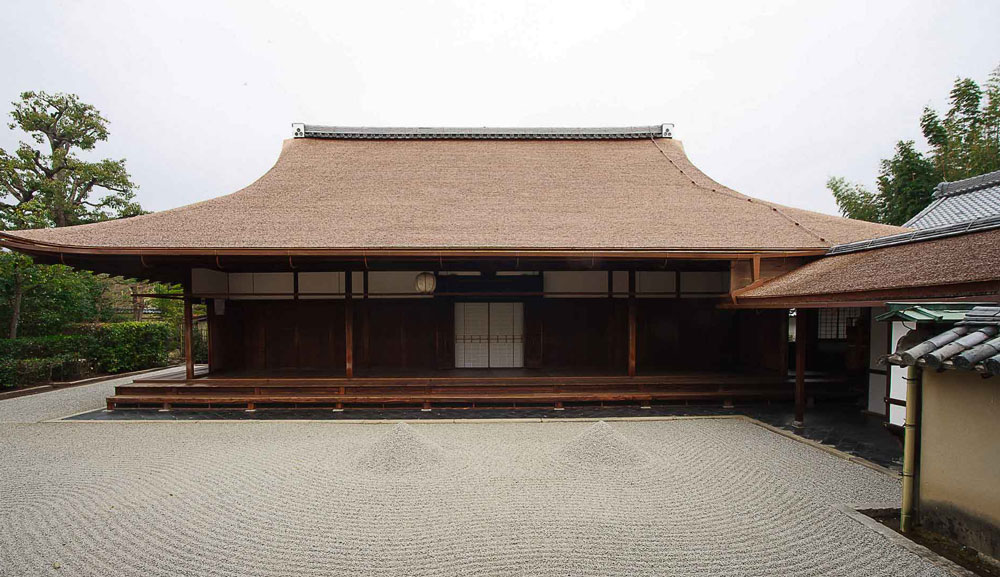Introduction
Daitokuji is a magnificent Zen temple complex in northern Kyoto and the head temple of the Rinzai sect’s Daitokuji school of Japanese Zen Buddhism. With nearly two dozen subtemples, it’s the perfect place to experience Zen culture and admire various Zen gardens.
Key Information
- Location: Daitokuji-cho, Kita-ku, Kyoto
- Founded: 1319
- Buddhist sect: Rinzai Zen (Daitokuji school)
- Main features: Zen gardens, tea ceremony culture, historic architecture
- Open subtemples: Daisenin, Ryogenin, Kotoin, Zuihoin
Historical Background
Founded in 1319, Daitokuji suffered severe damage during the Onin War (1467-1477). After reconstruction, it became a center for tea ceremony, associated with tea master Sen no Rikyu and warlords Oda Nobunaga and Toyotomi Hideyoshi. Oda Nobunaga’s grave is located at Sokenin, one of Daitokuji’s subtemples.
Main Attractions
Daisenin
Open year-round, Daisenin is the head of Daitokuji’s North School. Founded in 1509, it houses Japan’s oldest surviving alcove (tokonoma) and valuable sliding doors. Its rock gardens, designed to resemble Chinese landscape paintings, are considered among Japan’s finest.
Ryogenin
Built in 1502, Ryogenin is the headquarters of Daitokuji’s South School. Its main building is believed to be the oldest in Daitokuji. It features five distinct dry landscape gardens, with the largest representing the universe through white gravel and rock formations.
Kotoin
Constructed in 1601 by Hosokawa Tadaoki, Kotoin is famous for its maple trees. The temple approach is covered by a vaulted canopy of maples, which are also found throughout the tea and moss gardens. Mid to late November offers the best autumn colors.
Zuihoin
Though the smallest of the open subtemples, Zuihoin has a rich history. Built in 1535 by a warlord who later converted to Christianity, its main garden features gravel raked to resemble rough seas, while the rear garden has stones arranged in a crucifix pattern.
Best Time to Visit
Spring and autumn are ideal for visiting Daitokuji. Spring offers cherry blossoms, while autumn is known for colorful foliage, especially maple leaves in mid to late November.
Getting There
From Kyoto Station:
- Take bus 205 or 206 to Daitokuji-mae stop (45 minutes, 230 yen)
- Take bus 9 to Kitaoji-Horikawa stop, then walk 5 minutes (30 minutes, 230 yen)
- Take Karasuma Subway Line to Kitaoji Station (13 minutes, 260 yen), then a short bus ride (230 yen) or 15-minute walk
Hours and Fees
- Daisenin: 9:00-17:00 (until 16:30 Dec-Feb), open daily, 500 yen
- Ryogenin: 9:00-16:30 (last entry 16:20), few irregular closing days, 350 yen
- Kotoin: Currently closed indefinitely
- Zuihoin: 9:00-17:00, open daily, 400 yen
Visitor Tips
- Wear comfortable shoes for extensive walking
- Bring cash for entrance fees; many subtemples don’t accept credit cards
- Maintain a quiet demeanor to respect the temple’s tranquil atmosphere
- Check individual subtemple opening hours before visiting
- Consider hiring a guide for deeper insights into the temple’s history and culture
Official Website
Conclusion
Daitokuji Temple embodies the essence of Kyoto’s Zen culture, attracting visitors worldwide with its rich history, exquisite gardens, and deep-rooted tea ceremony traditions. Whether you’re a Zen enthusiast, history buff, or garden lover, Daitokuji is a must-visit destination. Make sure to include this unique temple complex in your Kyoto itinerary!
